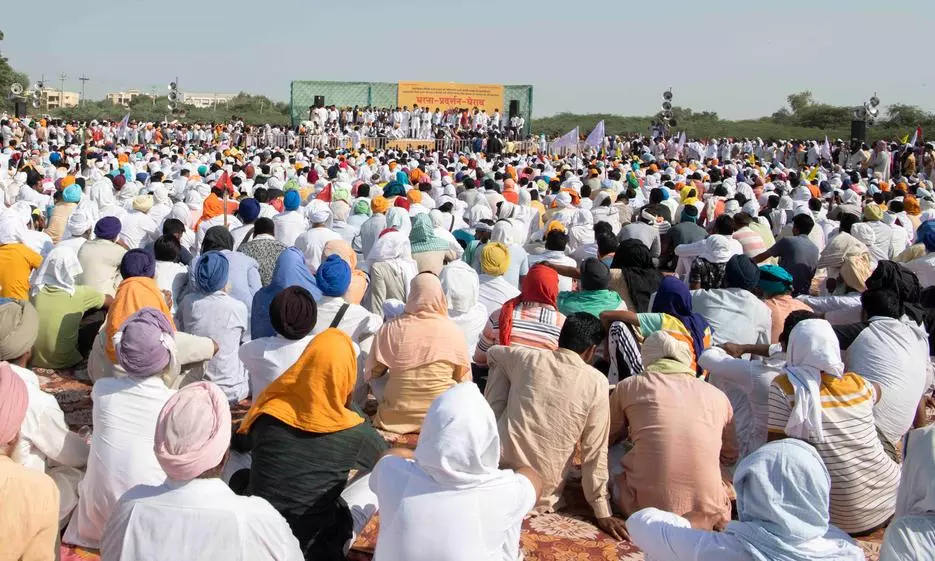
- Home
- India
- World
- Premium
- THE FEDERAL SPECIAL
- Analysis
- States
- Perspective
- Videos
- Sports
- Education
- Entertainment
- Elections
- Features
- Health
- Business
- Series
- In memoriam: Sheikh Mujibur Rahman
- Bishnoi's Men
- NEET TANGLE
- Economy Series
- Earth Day
- Kashmir’s Frozen Turbulence
- India@75
- The legend of Ramjanmabhoomi
- Liberalisation@30
- How to tame a dragon
- Celebrating biodiversity
- Farm Matters
- 50 days of solitude
- Bringing Migrants Home
- Budget 2020
- Jharkhand Votes
- The Federal Investigates
- The Federal Impact
- Vanishing Sand
- Gandhi @ 150
- Andhra Today
- Field report
- Operation Gulmarg
- Pandemic @1 Mn in India
- The Federal Year-End
- The Zero Year
- Science
- Brand studio
- Newsletter
- Elections 2024
- Events
- Home
- IndiaIndia
- World
- Analysis
- StatesStates
- PerspectivePerspective
- VideosVideos
- Sports
- Education
- Entertainment
- ElectionsElections
- Features
- Health
- BusinessBusiness
- Premium
- Loading...
Premium - Events

A dekko at key changes in farmers’ income, farm workforce, rural wages, stability in sugar sector, pulse and cooking oil imports, and fertiliser subsidies
By convention, finance ministers refrain from announcing schemes requiring large budget outlays in the run-up to the general elections. Finance ministers Jaswant Singh, Pranab Mukherjee, and P Chidambaram upheld this convention.
In their respective interim budgets, they sought Parliament’s approval for essential expenditures to keep the government going till the next one took over, while recounting their government’s achievements and telling the voters what to expect should the ruling party return to power.
The 2019 example
In February 2019, however, then Finance Minister Piyush Goyal broke with tradition and announced transfers of ₹6,000 to each farming household owning less than five acres of land. The money was to be transferred in three equal quarterly instalments.
To be able to transfer the first instalment before the end of the financial year, the scheme was backdated to December.
Since this government is always in campaign mode, Finance Minister Nirmala Sitharaman might, on Thursday, February 1, make announcements that endear the ruling party to voters. Rather than guess what those might be, it would be useful to turn an analytical gaze backwards at the hits and misses of this government over the past five years.
Farmers’ income rose just 25%
In February 2016, at a farmers’ rally in Bareilly, Prime Minister Narendra Modi declared the government’s intention to double farmer incomes by 2022, when India celebrates 75 years of Independence.
If he meant farming income, he would be falling far short of target. The value that farmers received for their produce, after adjusting for inflation, rose just 25 per cent in the five years to 2021-22. Without adjusting for inflation, it increased by 61 per cent.
If Modi meant a doubling of farmers’ income (without regard to the source), the target may have been achieved if one includes the annual transfers of ₹6,000 to farmer householders. According to the budget documents, about 125 million farmers’ families may have gained from this scheme. This should cover most farming households, whose estimates range from 90 million to 150 million.
Of course, farming families are not entirely dependent on agriculture. They have other sources of income as well.
Workforce in agri, rural wages
An issue that should concern the Finance Minister is the increase in the share of the workforce engaged in agriculture. To pull people out of poverty, it is necessary to provide them with more productive jobs in sectors other than agriculture.
After falling from 54.6 per cent as per the 2011 census to 42.5 per cent in 2018-19, the share of the workforce engaged in agriculture rose over the next two years and was 46.5 per cent in 2020-21, before declining to 45.5 per cent in 2021-22.
If a larger number of people are dependent on agriculture, there would be less going around because agriculture’s share of the total GVA (gross value added) is around 20 per cent.
More people in agriculture has also tamped down rural wages. As economist and activist Jean Dreze pointed out in an article, wages adjusted for retail inflation have grown by just 0.9 per cent a year for male agricultural workers and 0.3 per cent for non-agricultural labour between 2014-15 and 2021-22. While overall GDP growth is strong, this points to the need for policies that drive rural wages.
Stability in sugar industry
The sugar industry saw purposive action. The thrust on blending petrol with ethanol to reduce the oil import bill brought stability to the sugar industry, which was prone to boom and bust cycles.
Though ethanol blending was started in 2003, it truly took off only during the past few years. From 5 per cent ethanol blend in 2019-20, petrol is now nearly 12 per cent alcohol. Ethanol purchases of the oil marketing companies have increased from 173 crore litres to 467 crore litres during this period.
To reduce sugar surpluses, the government has allowed alcohol to be produced from B-heavy molasses and even sugarcane juice. It is debatable whether this is actually environment friendly or whether the groundwater and chemical fertilisers should be used to produce pulses and oilseeds which the country is deficient in.
Pulse imports have reduced
The country has also reduced dependence on imports of pulses, though self-sufficiency is still elusive. Pulses production rose from 22 million tonnes in 2018-19 to 27.5 million tonnes last year. Higher minimum support prices (MSP), procurement of larger quantities, and import restrictions have shored up prices and given farmers an incentive to grow more.
Higher production of chickpea (chana) and, to some extent, moong bean, has brought down the share of pulses in agri-imports. Chickpea was largely a winter crop of northwest India. From the 1990s, it was adapted through research to the warmer climates of Andhra, Karnataka, Maharashtra, and Madhya Pradesh.
But India continues to import sizeable quantities of pigeon pea (tur), lentil (masoor), and black gram (urad).
Cooking oil still import-dependent
In cooking oil, import dependence remains high. In an improvement over earlier schemes, the government announced a mission for oil palm cultivation in August 2021. It aims to increase area under oil palm to at least 6.5 lakh hectares or double the area that was brought under the plantation crop over the previous 30 years.
Farmers are assured of prices, but the promotion of the crop in the Andamans could harm its delicate ecology.
To reduce import dependence, the government also swallowed its ideological inhibitions and permittedthe cultivation of genetically modified (GM) mustard in 2022. This is the only GM food crop to be allowed for commercial cultivation.
But seed production, preparatory to large-scale planting, was interrupted by a suit in the Supreme Court, seeking a ban. The hearings are continuing. Mustard has a high percentage of oil – about 35-40 per cent – and while it cannot compete with palm oil, it can pare the import bill to some extent if it is promoted in areas that are currently under wheat.
Another momentous decision was the easing of gene editing rules.
Fertiliser subsidy has trebled
The government passed three pieces of legislation to make agriculture demand-driven, free up agri-trade, and attract private corporate investment in agriculture.
But the way it pushed these without discussion drew opposition from the farmers’ unions of Punjab, Haryana, and western Uttar Pradesh.
After holding out for more than a year, the government gave in to protests and repealed the laws. One of the laws was to make policies regarding external trade predictable and not arbitrary. But the way the government has been imposing export, import, and stocking restrictions betrays its lack of conviction in the reforms it had enacted.
The income transfers to farmers could have been an occasion to rethink input subsidies. But they continue as before. The fertiliser subsidy bill has risen from ₹81,000 crore in 2019-20 to ₹2,25,000 crore last year.
(The Federal seeks to present views and opinions from all sides of the spectrum. The information, ideas or opinions in the articles are of the author and do not necessarily reflect the views of The Federal.)


